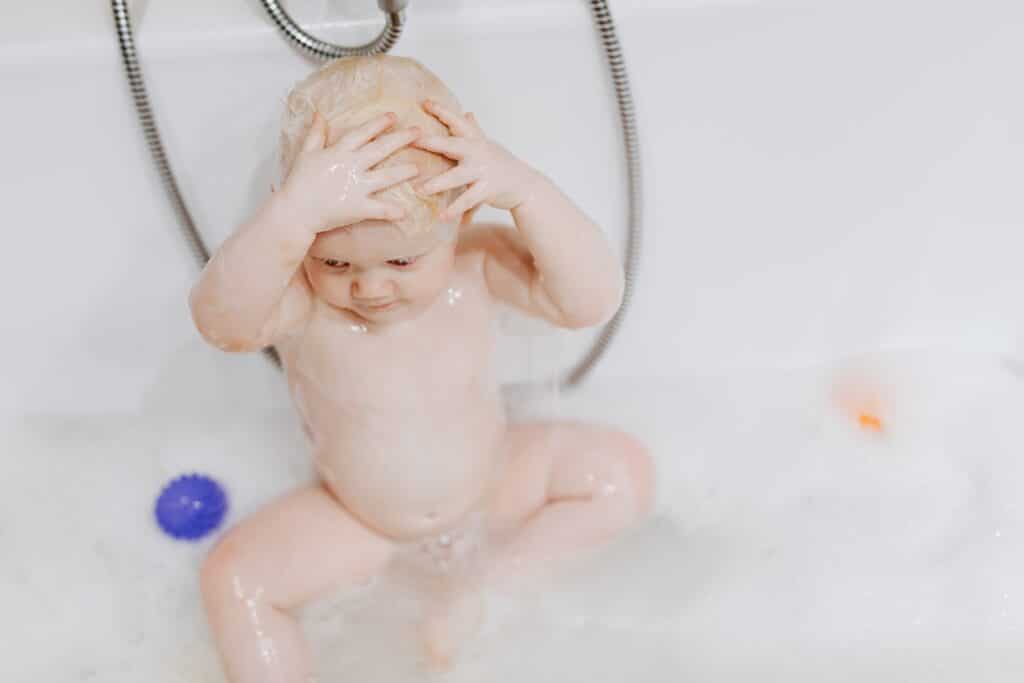Contents

Photo by Karolina Grabowska
As a new parent, ensuring proper baby hygiene is of utmost importance. One of the most crucial aspects of baby hygiene is bathing. A clean baby is a healthy baby. Bathing keeps your baby clean and helps soothe them, regulate their temperature, and can be a great bonding experience for you and your baby. However, having many questions about how often to bathe your baby and how to do it safely is natural. In this post, we’ll explore the best ways to wash your baby and how often to do it to maintain good baby hygiene. Whether you’re a first-time parent or have been caring for babies for years, these tips will help you keep your baby clean and healthy.
⇒ Read More: When Do Babies Laugh?
Newborns have delicate skin, and frequent bathing can cause dryness and irritation. Therefore, it’s recommended that you bathe your baby only two to three times a week. As your baby grows and becomes more active, you may increase the frequency of baths as needed.
However, there are exceptions to this rule. For example, if your baby has had a diaper blowout or has been playing outside and gotten dirty, it’s a good idea to give them a quick bath to avoid any skin irritation or infections. Similarly, if your baby has a skin condition, such as eczema or diaper rash, your doctor may recommend bathing more or less frequently, depending on the severity of the condition.
Even if you’re not giving your baby a bath every day, keeping their face, neck, hands, and diaper area clean throughout the day is essential. You can use a washcloth, sponge, and warm water to clean these areas. Always use mild, fragrance-free soap and shampoo when giving a bath to your baby.
⇒ Read More: 10 Effective Tips for Parents with Difficult Feeding Babies
Another crucial aspect of baby hygiene is proper diaper changing. Changing your baby’s diaper frequently is key to preventing diaper rash and other infections. It’s recommended to change your baby’s diaper every two to three hours or as soon as you notice it’s soiled. Make sure to clean your baby’s diaper area with a mild, fragrance-free baby wipe or a damp cloth and pat dry before putting on a fresh diaper.
Discover new arrivals, exclusive offers, and much more.
Hand washing is essential to prevent the spread of germs and infections. Always wash your hands before and after handling your baby, changing a diaper, and feeding your baby. You can use soap and warm water or a hand sanitizer that contains at least 60% alcohol.
Bathing a baby can be a bit intimidating, especially for first-time parents. However, with some preparation and following a few simple steps, you can make it a safe and enjoyable experience for both you and your baby. Here are some steps to follow for a safe and effective baby bath:
⇒ Read More: Advantages and Disadvantages of Using Pacifiers
Maintaining good baby hygiene is essential for your baby’s health and well-being. Bathing your baby two to three times a week, cleaning their diaper area frequently, and washing your hands before and after handling your baby are some of the key steps to ensure good baby hygiene. Bathing your baby can be a bonding experience, but it’s important to do it safely. Following the steps outlined in this post, you can make bath time a fun and safe experience for you and your baby.

Jasbir Kapoor is an author, blogger, web and graphic designer, SEO expert, logo designer, and entrepreneur with an MBA and a background in English Literature. He is passionate about creating engaging content and beautiful, user-friendly websites, and is always seeking new opportunities to learn and grow.
Leave a comment